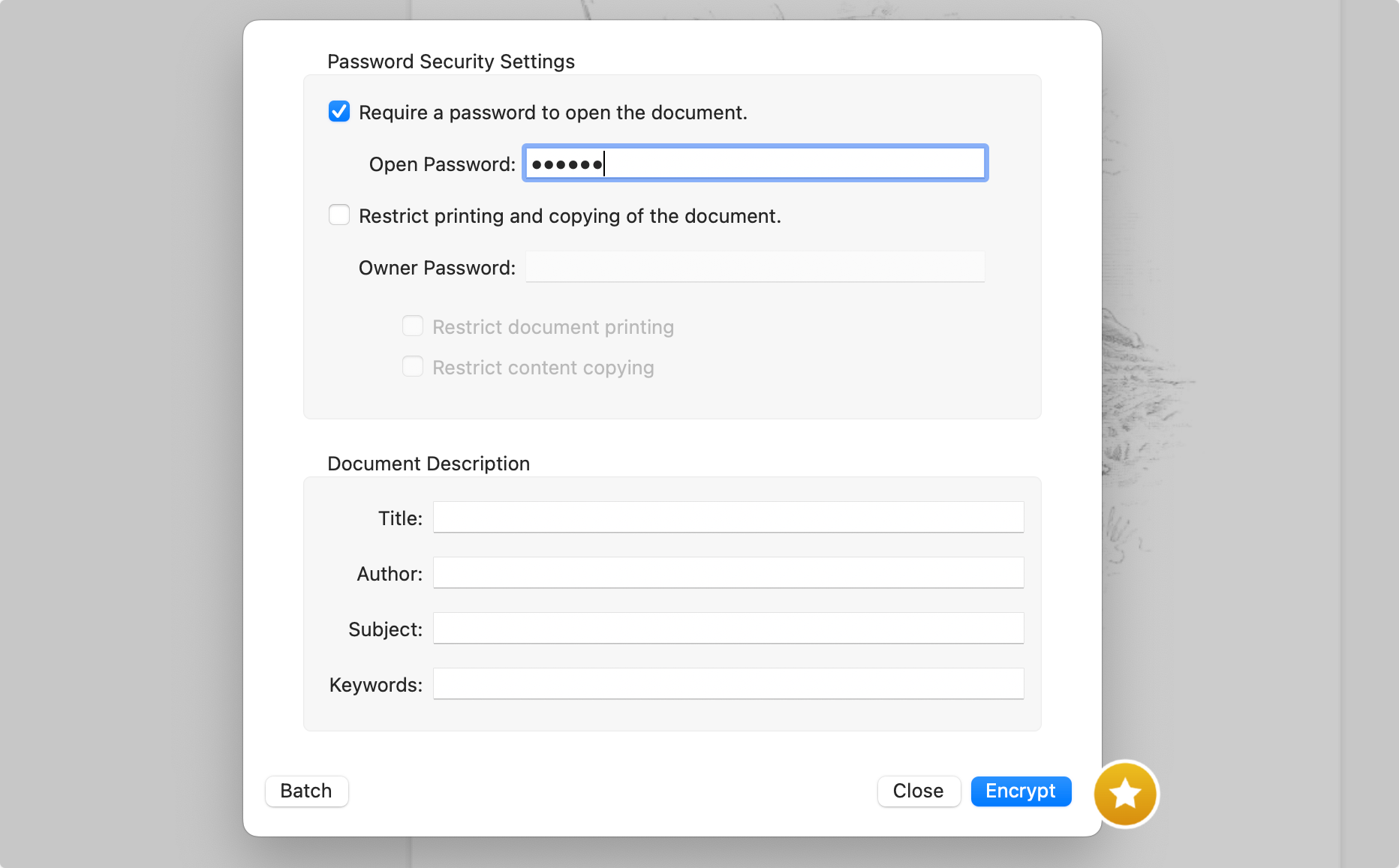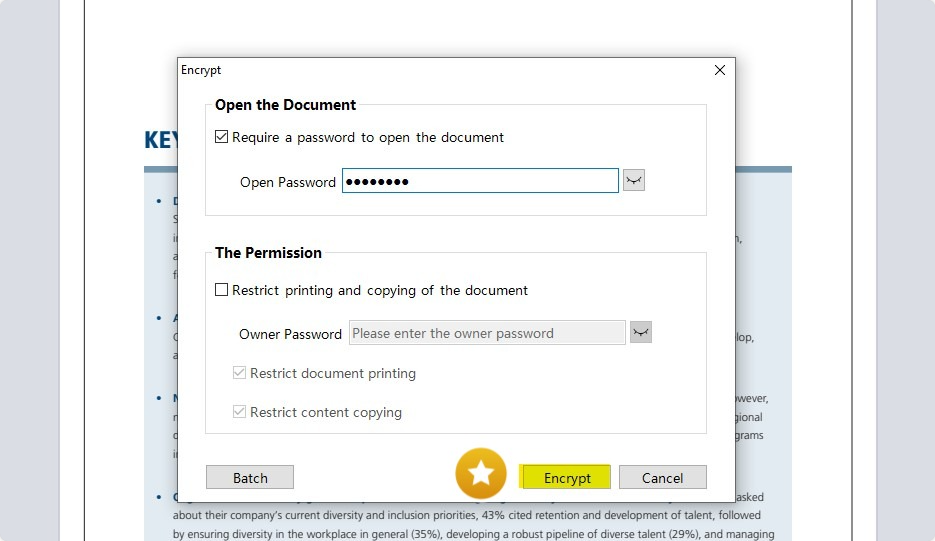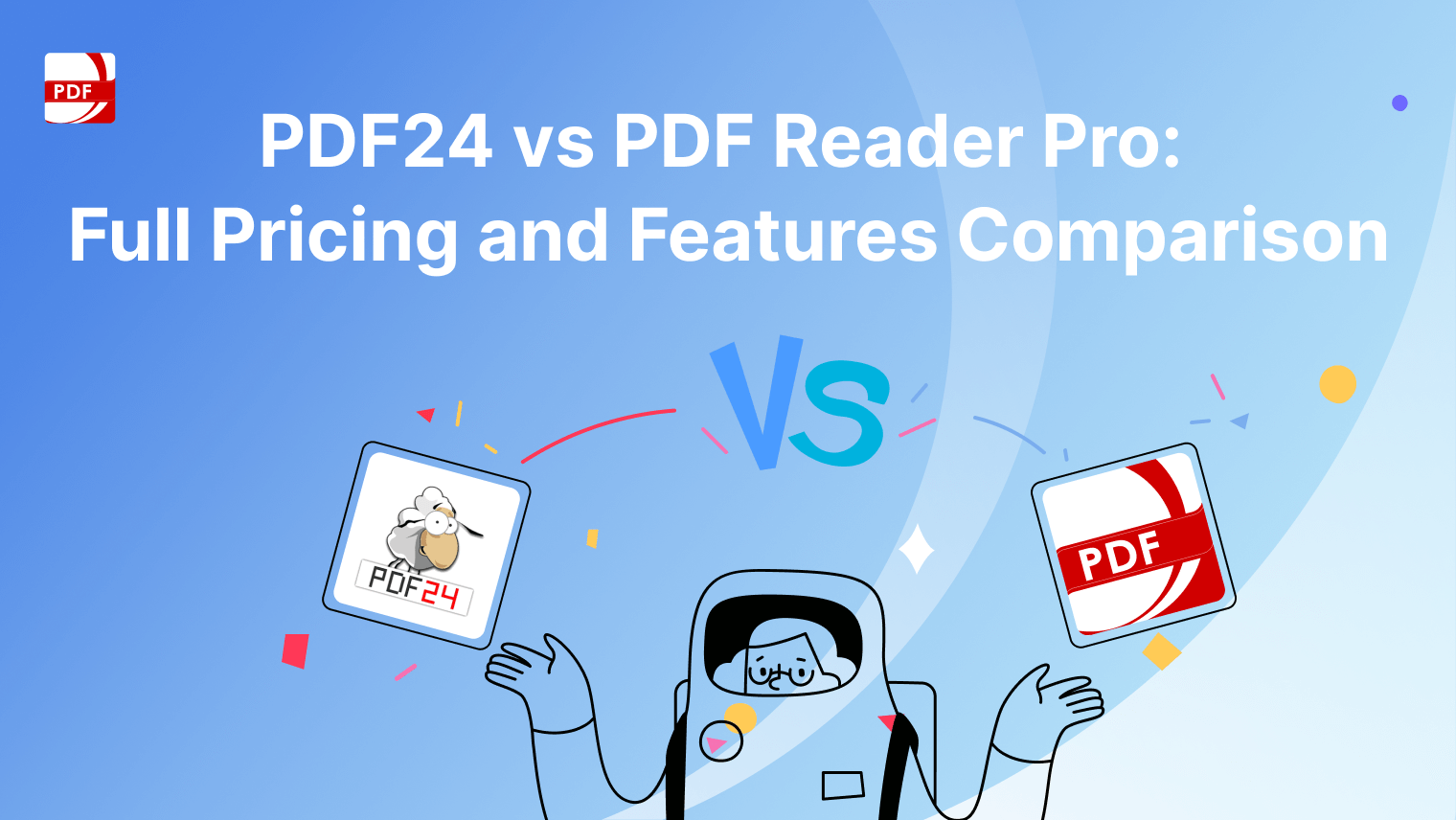Managing PDF documents often involves controlling who can access, modify, print, or copy content within the file.
Setting user permissions for PDFs is essential for protecting sensitive information and maintaining data integrity.
Importance of Setting User Permissions
- Data Security: Protect confidential information from unauthorized access or modification.
- Compliance: Ensure compliance with legal and regulatory requirements regarding data protection.
- Integrity: Maintain the integrity of the document by preventing unwanted changes.
Here are some important security features found in PDF Reader Pro:
| Security Feature | Description |
|---|---|
|
Password Protection |
Set passwords to restrict access to the document. |
|
Permissions Settings |
Control what users can do with the PDF (e.g., print, edit). |
|
Encryption |
Encrypt documents to enhance security against unauthorized access. |
|
Digital Signatures |
Add digital signatures for authentication and integrity. |
|
Redaction Tools |
Permanently remove sensitive information from documents. |
|
Watermarking |
Add watermarks to discourage unauthorized copying. |
|
Document Certification |
Certify documents to ensure they haven't been altered. |
|
Audit Trail |
Track changes and access to maintain document integrity. |
|
Secure File Sharing |
Share documents securely via encrypted links or settings. |
|
Temporary Access |
Set expiration dates for access to certain users. |
How to Set User Permissions on Mac
PDF Reader Pro is one of the most popular tools for creating and managing PDFs, including setting user permissions. Here’s how to do it on Mac:
Step 1: Download PDF Reader Pro
You can download the latest version of our software for free to start on Windows or Mac here:
Step 2: Open Your File
Click "Open File" or drag and drop your document.
Step 3: Click File to Start
Click "Set Passwords" to open the pop-up window. 
Step 4: Create a Password
Enter a password of your choosing and choose further restrictions if needed. 
Click "Encrypt" to complete the process.

How to Set User Permissions on Windows
For our Windows users, we've also prepared a guide:
Step 1: Same as Above
Step 2: Open Your PDF Document
You can do this by dragging your file to the home screen.
Step 3: Choose a Secure Password
Choose a password under security options.
Step 4: Set Parameters
Once you're ready, click "Encrypt".
Setting user permissions for PDFs is a crucial step in managing document security.
By understanding and applying the appropriate settings, you can maintain control over who can access and modify your PDF documents.





 Free Download
Free Download  Free Download
Free Download 





 Support Chat
Support Chat 